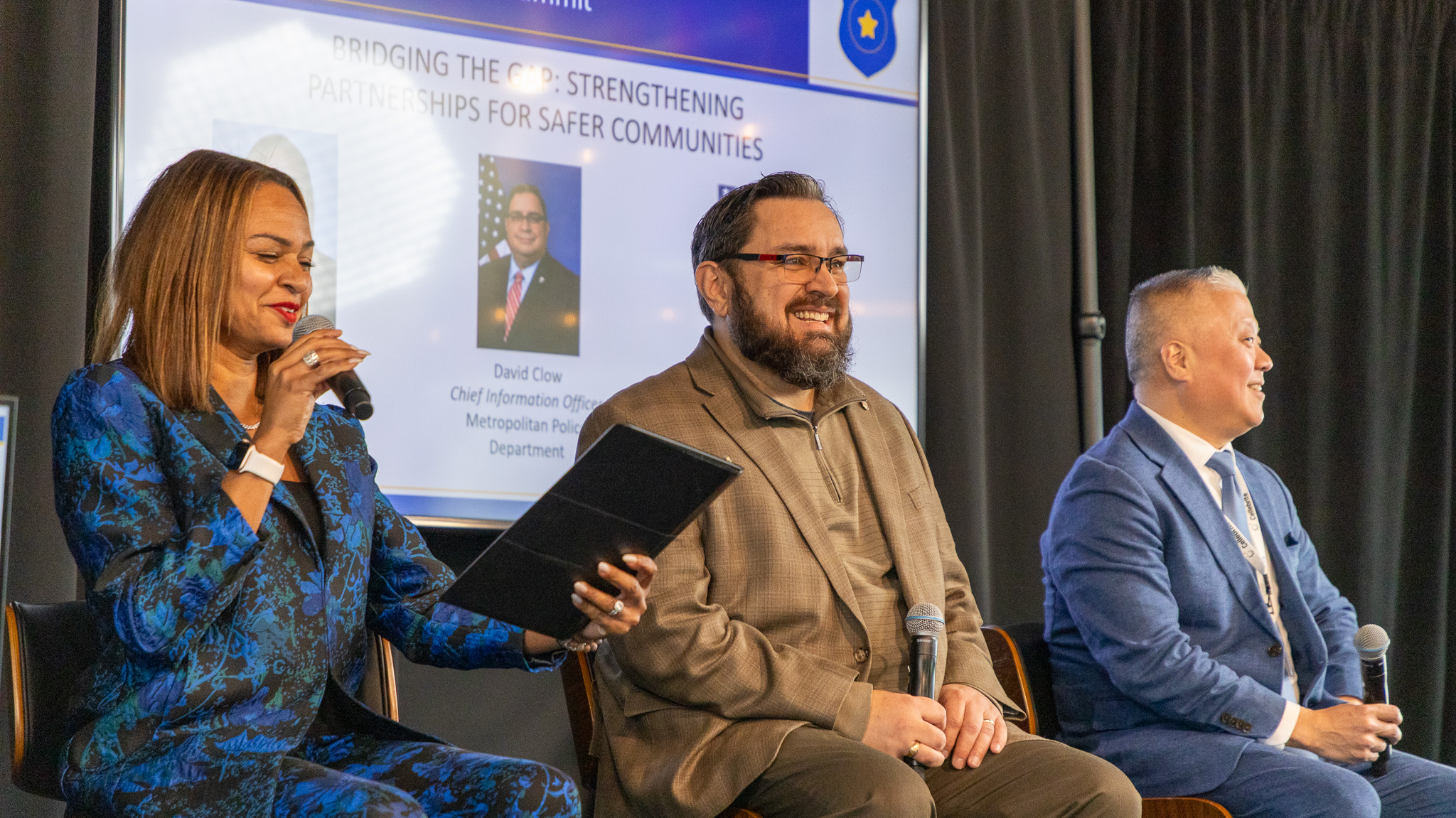
This article is one of a 5 part series on Planning for Change in Public Safety. To read the introduction, please see Planning for Change in Public Series – Intro.
Step One: Build A Core Team
Early in my experience implementing technical projects for the Columbus, Ohio Division of Police, a Deputy Chief with more than 30 years on the department passed on valuable knowledge about implementing change:
“Remember this; If you were handing out $100 dollar bills,
some people would complain it wasn’t two fifties.”
Resistance to change at the organizational level is a natural response for everyone. Police officers, and all first responders, are trained to do things in a certain way and when change comes, even when it improves the overall workflow, they can and some will resist. Resistance can be found for each kind of user (i.e., patrol, investigations, supervision, civilians, etc.) and can generally be organized into one of four types:
- Champions: They love change and technology and are willing to lead the way once they have direction. Even when there are product, IT, or policy issues, they see the benefits of the system and will stick with the change.
- Backbenchers: They can change when persuaded, but do not want to be out front right away. They take a wait and see approach. They may like the new public safety system but are not willing to say anything until other people speak up.
- Settlers: They are comfortable with the old way of doing things in the legacy system and do not want to change. Generally, most people fall into this category, so they require a lot of attention to achieve buy-in.
- Detractors: They hate change and likely will not change. Depending on their positional and personal authority, they can poison the well and cause others to resist the adoption of the new public safety system.
The first three types are generally expected and managed fairly easily. The last can prove not only frustrating, but can, at times, cause unnecessary issues and delays. With proper planning, however, agencies can implement strategies that build awareness and understanding of the change to come.
Core Team – Responsibilities and Composition
The first line of defense for agencies who are instituting organizational change is a Core Team. Core Team members will be involved in the project from inception, through planning and implementation, and post-go-live. They will attend scheduled meetings, provide knowledge and experience, and communicate internally and externally with the vendor and others to identify and mitigate issues. They will also assist in initial product requirement development, process configurations and participate in final product evaluation.
Furthermore, one of the most important responsibilities of Core Team members is to advocate for change. As the project progresses, they will have many opportunities to talk to co-workers, supervisors and subordinates about the project both generally and specifically. They can ask questions, clarify issues and gather ideas to identify problems and find solutions. Core Team members open communication channels across the agency that not only help the team gather information but help keep the rest of the organization informed about what is happening. This will not only excite the champions who anticipate the change, it can provide a positive influence for the backbenchers and settlers who initially may not be as supportive.
The core team should be made up of personnel who can provide the following:
- Executive Staff or Sponsor: All projects require decisions: policy decisions, financial decisions (training, scheduling, overtime, etc), and personnel resourcing. To be successful, the core team should include at least one person with the authority to make and/or approve these types of decisions or have direct access to those who can.
There are few things that will slow a project down more than being forced to wait while letters are written asking for approvals for change which are then sent up and down differing chains of command and most likely result in questions that need to be answered, thus causing more delay. If the core team has a ranking member of staff who can contact other chains directly or make approvals themselves, the process will be much smoother and faster.
Additionally, in the case of the detractors (those who hate change) it is also important to have the authority to issue orders and implement consequences, if necessary. Involved personnel may have used the existing system, or operated in the current workflows, their entire career. There may be those who will ‘toe the line’ of compliance with new procedures. A Core Team member with authority can make the ‘choice’ to comply a bit easier.
- Technical Administrative Staff – Any new technology project will require technical resources. There will be user accounts to create and security concerns to resolve. All new solutions require application administration, and perhaps organization network requirements or technical adjustments that will need to be addressed.
Additionally, the agency may desire some internal first-line technical support for issues that occur within the agency’s domain or network configuration. Technical staff will also provide guidance and assistance with any application interfaces that will need developed or replaced and can help with data migration efforts. Including technical support personnel on the core team can help to prevent issues at the organizational level and can smooth the transition to the new system in the long run.
- Subject Matter Experts (SMEs): SMEs are personnel with the appropriate backgrounds to understand the requirements of the project, provide product testing resources and develop training. SMEs should come from any area of the department that is being affected by the impending changes. In the case of an RMS, this would include those taking reports (patrol officers, Telephone Reporting unit personnel), those reviewing / approving reports (supervisors, records personnel, NIBRS administrators), and those working with the data from reports (investigators, evidence room personnel, crime analysts). For a CAD, dispatchers, calltakers, GIS and supervisory personnel would be included.
The experience the SMEs gain during the project can be invaluable during the transition to and after go-live. SMEs can develop and provide training, answer questions, and anticipate the issues that may arise for end users. They provide the knowledge and experience needed both at the project’s beginning and at its conclusion.
- External Stakeholder Liaisons: Agencies do three things with data: they collect it, they use it and they share it. Today, data sharing is no longer a luxury, it is a requirement. Whether it is simple data exports, e-mailed statistical reports, submission to fusion centers or mandated state and federal reporting, agencies need to plan for more than collecting required data. They need to know the technical, legal, and logistical requirements of sharing that data.
Preferably, liaison personnel should have a background in working with the data or the external stakeholder. For example, assigned court personnel to work with the courts; technical personnel who are involved with data sharing or reporting interfaces, crime analysts who provide statistics or reports to the public or other agencies. The better liaison personnel understand the external needs, the better equipped they will be to assist in the data sharing process from collection to delivery.
Core Team – Resources
The agency should understand that there is an ongoing commitment for project Core Team members. As mentioned, the Core Team is deeply involved in all aspects of the project and will be required to attend meetings, monitor emails, participate in communications with the vendor, prepare the department for what is to come, and help ensure the project has as few delays as possible.
It may not be viable to specifically assign the entire Core Team to the project, but in the case of organization-wide change, the more personnel that can be dedicated to the project full-time, or even on an “as needed” status such as during testing or at go-live, the better the agency will be prepared at each step of the implementation process.
When identifying team members, agencies have many options:
- Known SMEs: The obvious place to start is with the people within the organization who are ‘known’ subject matter experts; the officer or supervisor that everyone knows to go to when they have a problem or need a solution.
- Assigned Training personnel: Academy staff, trainers and Field Training Officers are an excellent resource for the Core Team. They have experience in both learning and instructing new knowledge and skills, are familiar with developing training resources, and often have a wide range of experience within the agency. They are also accustomed to evaluating performance and providing feedback.
- Unit / Team trainers: Look for employees that provide informal training within individual units, especially in units with specialized knowledge. Is there an Evidence Room employee that ‘mentors’ new hires? Is there a Records Tech that provides unit documentation or instruction on procedures? Natural leaders who have gained extensive knowledge about internal processes and the pain-points associated with them are invaluable when planning for organizational change.
- Light Duty / Restricted Duty personnel: Often times agencies have personnel who are in temporary assignments or ‘desk duty’ due to personal injury or physical restrictions. These personnel may not have specified job duties during their restriction, which makes them excellent resources for doing necessary tasks like testing, data entry or working as a liaison between the vendor and end users. When those employees return to their regular assignment, they take their new knowledge with them increasing the level of experience available to those working with them.
Some readers may be thinking that assembling a core team can’t occur until the project is defined and underway and in some respects, they are correct. They should take care, however, not to get caught in a circular ‘chicken and egg’ thought process. The details of the project will indeed directly impact the selection of team members. Agencies should keep in mind; the entire core team does not have to be assembled on Day 1. In fact, it would be expected that the team will grow in number and experience as the project becomes better defined. However, an executive sponsor, a member of IT staff and one or two SMEs can identify broad project goals and accomplish some of the preliminary information gathering for presentation as future team members are identified.
The next post in this series will examine how a project’s goals are established and the requirements are developed. We will also discuss potential project phases and the planning involved in each.





